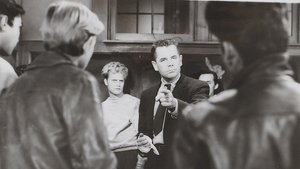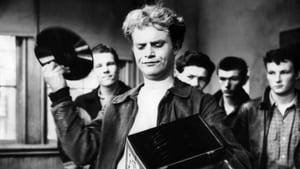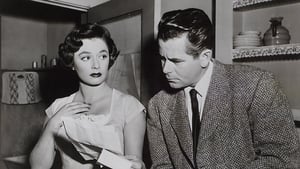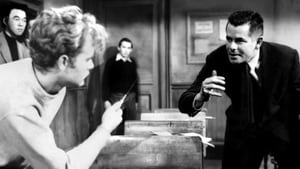Contact: [email protected]
Video Sources 0 Views
- Watch trailer
- Blackboard Jungle

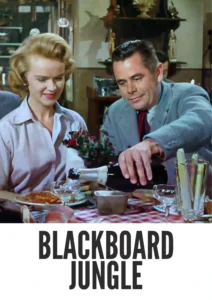
Synopsis
Table of Contents
ToggleUnveiling the Realities of Adolescence: Blackboard Jungle 1955 – A Critical Review of a Groundbreaking Classic

Introduction
In the realm of old movies, Blackboard Jungle 1955 stands tall as a groundbreaking portrayal of adolescence, rebellion, and societal struggles. This seminal drama, directed by Richard Brooks, shook audiences upon its release and continues to resonate with viewers today. Now, with the release of its early colored version, the film’s impact is poised to reach new heights. In this review, we delve into the significance of Blackboard Jungle 1955’s early colored version and its enduring importance in the world of cinema.
Check The Full Colorized Movies List
Check Our Colorized Movies Trailer Channel
Understanding Blackboard Jungle 1955: Director, Cast, and Genre
Directed by Richard Brooks, Blackboard Jungle 1955 represents a bold departure from conventional filmmaking of its time. The film boasts a stellar cast, with Glenn Ford delivering a riveting performance as Richard Dadier, an idealistic teacher who confronts the harsh realities of inner-city education. Supported by a talented ensemble cast, including Sidney Poitier and Vic Morrow, Blackboard Jungle 1955 blurs the lines between teacher and student, authority and rebellion. As a gripping drama set in an urban high school, the film challenges societal norms and explores the complexities of adolescence with raw honesty.
Exploring the World of Blackboard Jungle 1955: Plot and Characters
Set against the backdrop of a turbulent urban landscape, Blackboard Jungle 1955 follows the journey of Richard Dadier, a young teacher who takes on a challenging assignment at North Manual High School. As Dadier struggles to connect with his unruly students, he faces opposition from both within and outside the classroom. Amidst the chaos, Dadier forms a bond with Gregory Miller, a troubled student with a hidden talent for the piano. As tensions escalate and violence erupts, Dadier must confront his own prejudices and fears, leading to a climactic showdown that challenges the very foundations of the educational system.
The Art of Film Colorization
Film colorization has long been a controversial topic in the world of cinema. By adding color to black and white films, colorization seeks to breathe new life into classic movies and introduce them to new audiences. While some purists argue against colorization, citing concerns about preserving the integrity of the original film, others view it as a way to enhance the viewing experience and make older films more accessible to modern audiences. Regardless of where one stands on the issue, there’s no denying the impact that colorization has had on the world of cinema, with early colored versions of classic films offering a fresh perspective on beloved favorites.
Early Colored Films: A Brief History
The history of early colored films is as rich and varied as the films themselves. From hand-tinted silent movies to digitally colorized classics, filmmakers have long experimented with adding color to black and white films. In the early days of cinema, colorization was a labor-intensive process, with artists painstakingly adding color to each frame by hand. However, with advances in technology, colorization techniques became more sophisticated, allowing for the creation of vibrant and lifelike colors in black and white films. Today, early colored versions of classic films offer viewers a unique opportunity to experience these cinematic treasures in a whole new light.
Blackboard Jungle 1955 and Its Early Colored Version
The decision to release Blackboard Jungle 1955 in a colorized format was met with both anticipation and skepticism. While some welcomed the opportunity to see the film in color, others expressed concern about tampering with a classic. However, the early colored version of Blackboard Jungle 1955 succeeds in enhancing the film’s visual impact while staying true to its original spirit. By carefully selecting colors that complement the film’s gritty urban setting, the colorized version preserves the mood and atmosphere of the original while introducing it to a new generation of viewers.
The Debate Over Film Colorization
The debate over film colorization is as old as the practice itself, with proponents and detractors arguing over its merits and drawbacks. Supporters of colorization argue that it breathes new life into classic films, making them more visually appealing and accessible to modern audiences. They also point out that colorization can enhance the viewing experience, adding depth and dimension to the film’s visuals. However, opponents of colorization argue that it can detract from the original artistic vision of the filmmaker, altering the intended look and feel of the film. They also express concerns about the potential for colorization to erase the historical record and disrespect the legacy of filmmakers who created their works in black and white.
Examining Blackboard Jungle 1955 as an Early Colored Film
In analyzing Blackboard Jungle 1955 as an early colored film, it’s essential to consider how colorization enhances or detracts from the viewing experience. While purists may prefer the original black and white version, the early colored version offers a fresh perspective on the film’s visuals, adding depth and dimension to the story. By carefully selecting colors that complement the film’s gritty urban setting, the colorized version preserves the mood and atmosphere of the original while introducing it to a new generation of viewers. Ultimately, whether one prefers the black and white or colorized version of Blackboard Jungle 1955 comes down to personal preference, but both versions offer a compelling glimpse into the world of urban education and societal struggles.
Influence and Legacy: Blackboard Jungle 1955’s Impact on Cinema
Blackboard Jungle 1955’s impact on cinema cannot be overstated. As one of the first films to explore the realities of urban education and juvenile delinquency, it paved the way for a new wave of socially conscious filmmaking. Its gritty realism and unflinching portrayal of societal issues set a new standard for drama and influenced countless filmmakers in the years to come. From its groundbreaking use of rock ‘n’ roll music to its authentic portrayal of teenage rebellion, Blackboard Jungle 1955 remains a timeless classic that continues to resonate with audiences today.
Director’s Cinematic Legacy: Beyond Blackboard Jungle 1955
Richard Brooks’s legacy extends far beyond Blackboard Jungle 1955, encompassing a diverse body of work that spans multiple genres and styles. From gritty urban dramas to epic historical epics, Brooks’s films reflect a keen understanding of the human condition and a fearless commitment to storytelling. His influence on local and international filmmaking is undeniable, with many filmmakers citing him as a source of inspiration and admiration. As a director, writer, and producer, Brooks left an indelible mark on the world of cinema, and his work continues to be celebrated by cinephiles around the world.
Themes Explored in Blackboard Jungle 1955
Blackboard Jungle 1955 explores a wide range of themes and issues, including the challenges of urban education, the complexities of adolescence, and the struggles of societal integration. Through its nuanced portrayal of characters and situations, the film delves into the dark underbelly of society, shining a light on issues that continue to resonate today. Themes of authority, rebellion, and redemption permeate the story, offering viewers a thought-provoking glimpse into the human condition.
Reception and Controversy Surrounding Blackboard Jungle 1955
Upon its release, Blackboard Jungle 1955 sparked both critical acclaim and controversy. While many praised the film for its honest portrayal of societal issues, others criticized it for its portrayal of juvenile delinquency and its use of rock ‘n’ roll music. However, over time, Blackboard Jungle 1955 has come to be recognized as a groundbreaking work of cinema, with its influence extending far beyond its initial release. Today, the film is celebrated as a classic of the genre and continues to be studied and analyzed by filmmakers and scholars alike.
Where to Watch Blackboard Jungle 1955 Online
For those eager to experience Blackboard Jungle 1955 in its early colored version, the film is available on popular streaming platforms, offering viewers the opportunity to immerse themselves in the world of classic cinema from the comfort of their own homes. Whether seen in its original black and white format or in vibrant color, Blackboard Jungle 1955 continues to captivate audiences with its gripping storytelling and powerful performances.
FAQs About Blackboard Jungle 1955
Q: Is Blackboard Jungle 1955 based on a true story?
A: Blackboard Jungle 1955 is a work of fiction, although it draws inspiration from real-life experiences and societal issues. Director Richard Brooks crafted a compelling narrative that sheds light on the challenges of urban education and juvenile delinquency, offering viewers a thought-provoking glimpse into the complexities of the human condition.
Q: What makes Blackboard Jungle 1955 stand out from other films of its time?
A: Blackboard Jungle 1955 stands out for its gritty realism, authentic performances, and groundbreaking use of rock ‘n’ roll music. Director Richard Brooks’s fearless approach to storytelling and his willingness to tackle taboo subjects set the film apart from other dramas of its time, making it a groundbreaking work of cinema that continues to resonate with audiences today.
Q: How does the early colored version of Blackboard Jungle 1955 compare to the original black and white version?
A: The early colored version of Blackboard Jungle 1955 offers a fresh perspective on the film’s visuals, adding depth and dimension to the story. By carefully selecting colors that complement the film’s urban setting, the colorized version preserves the mood and atmosphere of the original while introducing it to a new generation of viewers. However, some purists may prefer the original black and white version for its timeless aesthetic and artistic integrity.
Q: What was the critical reception of Blackboard Jungle 1955 upon its release?
A: Blackboard Jungle 1955 received critical acclaim for its honest portrayal of societal issues and its powerful performances. The film’s early colored version sparked debate among fans and critics, with opinions divided on the merits of colorization. However, its enduring legacy as a cinematic classic remains undisputed.
Q: Who was involved in the production of Blackboard Jungle 1955?
A: Blackboard Jungle 1955 was directed by Richard Brooks, who brought his unique vision and sensibility to the film. The cast included Glenn Ford in the lead role of Richard Dadier, alongside Sidney Poitier and Vic Morrow, whose performances earned widespread acclaim. Together, they created a timeless classic that continues to resonate with audiences around the world.
Conclusion
In conclusion, Blackboard Jungle 1955 remains a powerful and thought-provoking exploration of adolescence, rebellion, and societal struggles. Whether seen in its original black and white format or in its early colored version, the film continues to captivate audiences with its gripping storytelling and powerful performances. As a testament to the enduring power of cinema, Blackboard Jungle 1955 remains a timeless classic that will continue to be celebrated for generations to come.

